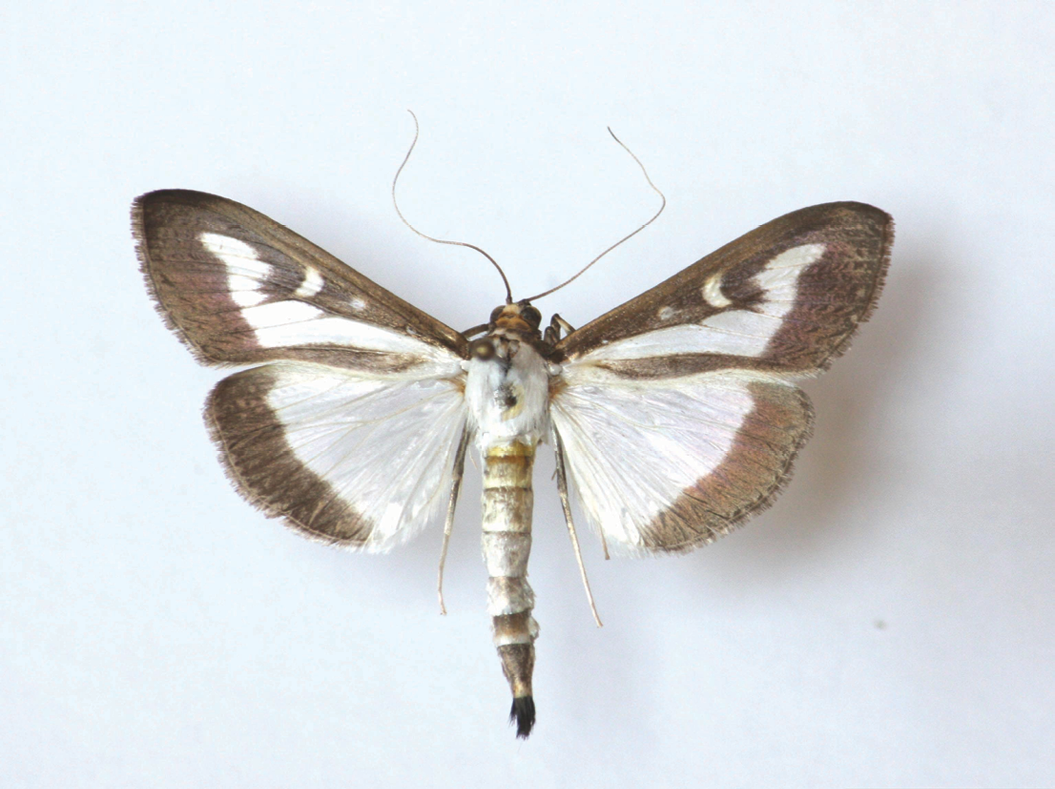
Box tree moth is currently one of the most worrisome pests for nursery growers. This invasive pest can significantly damage and potentially kill boxwood (Buxus species) plants if left unchecked. The caterpillars are ravenous feeders, and heavy infestations can completely defoliate host plants. After the leaves are gone, they feed on the bark which eventually kills the plant.
The moth is native to East Asia and has become a prolific pest in Europe. It was first detected in Canada in 2018 in Ontario. Researchers have surmised that the movement of infested boxwood plants led to the pest’s arrival across the Atlantic Ocean. In 2021, APHIS confirmed box tree moth in New York, and since then it has been confirmed in Massachusetts, Michigan, Ohio, Delaware, and Pennsylvania.
In May of 2024, USDA-APHIS updated the quarantine to include the new areas in Ohio. APHIS also has been prohibiting interstate movement of boxwood from quarantined areas, unless the nursery can provide a compliance certificate.
Symptoms
The most obvious symptom of a BTM infestation is bedraggled “stick shrubs” that are totally or mostly defoliated producing see-through plants. This symptom may be seen at a distance. There are few leaves on the ground, only debris.
Early instar BTM caterpillars commonly feed on the upper or lower leaf surfaces as skeletonizers. They may also feed along the edges of leaves to produce notches. This symptom may be difficult to detect in the early stages of an infestation.
The leaf damage produced by larger, later instar caterpillars is very obvious with entire leaves being consumed. It’s the “signature” symptom of BTM.
BTM spends the winter as caterpillars in the 3rd – 4th instar stage. The overwintered caterpillars resume feeding and development in the spring.
BTM may have as many as 5 generations per season depending on climatic conditions. In Canada, 2 overlapping generations have been consistently observed. However, a Penn State fact sheet notes if BTM were to be found in Pennsylvania, the moths may have as many as 3 generations.
Ohio is the southernmost infestation found so far in North America.

Management
To effectively manage the box tree moth and mitigate its impact on boxwood populations, a combination of cultural, biological, and chemical control methods, in an Integrated Pest Management plan is recommended.
Cultural controls
Infested boxwood plants should be promptly removed and carefully destroyed to prevent the pest from spreading further. Handpicking or pruning affected branches can be effective when infestations are localized and manageable. Regular monitoring is essential to detect any signs of box tree moth activity, including the presence of insects or eggs.
Biological controls
While host-specific biological control agents for the box tree moth are still under study and not yet available for widespread release, there are effective alternatives for managing infestations. Bacillus thuringiensis var. kurstaki (Btk), a commercially available biopesticide, has demonstrated effectiveness against the box tree moth. Btk is widely used in pest management programs and has shown promise in controlling the larvae of various moth species, including the box tree moth. When applied according to label instructions, Btk targets the larvae specifically, minimizing harm to non-target organisms and the environment.
Chemical controls
There are multiple pesticide options available for controlling the box tree moth. It’s important to follow the recommended rates and application intervals specified on each insecticide label to ensure effective and safe usage.
A collaborative group of researchers (Steven Frank from North Carolina State University, Dan Gilrein from Cornell Cooperative Extension of Suffolk County and Matthew Havers and Cristi Palmer, from the IR-4 Project and Rutgers University) created a fact sheet with insecticide options for box tree moth management, including active ingredients, modes of action and re-entry intervals.
For their detailed list of insecticides, go to bit.ly/BTMchem.

Explore the November 2024 Issue
Check out more from this issue and find your next story to read.
Latest from Nursery Management
- John Ruter shares UGA's latest woody and herbaceous ornamental plant breeding projects
- Conor Foy joins EHR's national sales team
- Pantone announces its 2026 Color of the Year
- Syngenta granted federal registration for Trefinti nematicide/fungicide in ornamental market
- Get to know Kayela Aeppli
- HILA 2025 video highlights: John Gaydos of Proven Winners
- Q&A with Justin Bartlett
- Be the best choice





